Employee Gamification in 2025 (Gamified Training for the Win!)
Are you frustrated with your employee productivity and think employee gamification might light a much-needed fire under your employees?
Do you often catch them browsing Amazon, scrolling through Instagram, or just staring off into space?
Take a breath and think before you go all Monty Burns on their asses.

Why not gamify their tasks and get them pumped about their jobs?
And, since you're here do you want to know how gamification can improve employee motivation and performance?
Do you want to learn how you can up-level your workplace, so no one gets, um, Burned?

Let's Play!
What Is Employee Gamification?
Attention all employers.
You need to change the way you think about performance management.
Did you know that managers are more responsible for employee engagement than anyone else in the company?
And only 22% of employees feel the way their performance is managed motivates them to do outstanding work?
Hey, we’re not here to point fingers.
We’re here to show you that there is a way to mitigate these abysmal employee motivation statistics in your workplace.
So, what is gamification? It simply involves taking a task and adding a system of rules and awards to make it more like a game.
Seems simple, yes?
But how is gamification used to increase employee productivity in the workplace?
Gamification at work means integrating employee reward-based games into corporate training or daily work tasks.
By doing so, you’ll create a more enjoyable employee experience.
And as a bonus, it will help you achieve your business objectives.
Win-win.
Elements of Employee Gamification
What is a corporate gamification system? This is where you add gameplay elements to your business objectives. First, you must define those objectives and then choose your employee gamification software.
Let’s jump into the essential gamification elements:
Points, Badges, and Rewards
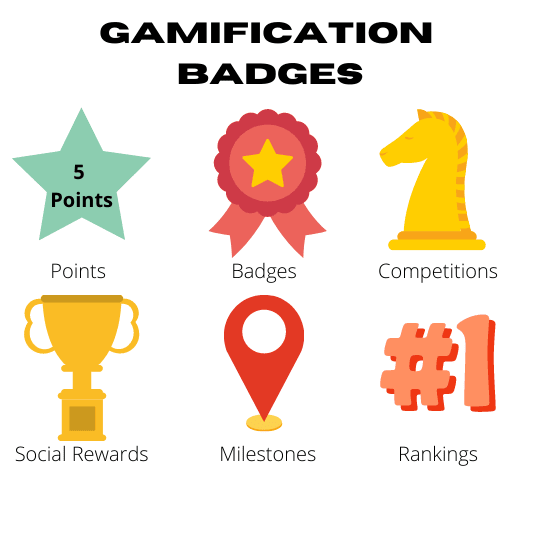
Employees can accumulate points once they’ve executed a specific action. Then, they’re awarded a badge for proving their competency for a particular skill.
Workers will feel motivated to overcome a specific hurdle to reach a goal when they know they can earn points, badges, and rewards.
Employee gamification rewards examples could be cash, discounts, or freebies.
Milestones and Levels
These refer to the various checkpoints an employee must meet along their gamification journey.
When employees reach a new level, it can invoke a sense of camaraderie with others on the same level. Add an element of difficulty to a game, and the anticipation of smashing through the level builds.
Characters and Avatars
Avatars or characters can be visual manifestations of the worker or act as a guide.
Remember that annoying SOB “Clippy”?
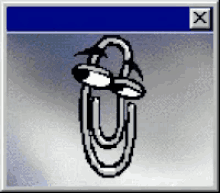
Clippy was the ever-helpful assistant that was always on hand if a user needed help using Microsoft Office.
But, its random pop-ups were 100% irritating.
But, today’s avatars can help create a bond between the worker and the game element. You could opt for a well-known character representing your company or allow workers to choose their own.
If you choose to use an avatar or character, make sure it fits your company culture, adds value, and doesn’t disturb the user mid-flow.
Like Clippy.
Leaderboards
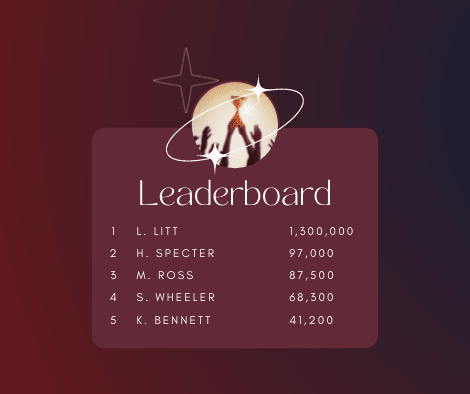
A leaderboard displays the names of employees according to the top score. At a glance, individuals can see what targets they need to achieve and how they compare with their colleagues.
Leaderboards can create a Vegas-style atmosphere conditioning workers' brains to "go for gold."
Yes, they foster a bit of healthy competition.
But they also tap into an innate desire for power, recognition, and achievement.
Plus, there’s nothing like looking up at a scoreboard you’re falling behind on to get your butt into gear!
Performance Graphs
Performance graphs don't compare a worker’s personal achievements to the rest of the team. Instead, a performance graph shows their latest performance compared to a preceding one.

Then, rather than waiting for the dreaded annual employee performance review, they can immediately see what they need to focus on to improve.
Benefits of Employee Gamification
What are the benefits of using employee gamification for engagement?
Well, besides enhanced engagement, you’re also holding your teams accountable for delivering results.
And the upshot is raised morale and reduced employee turnover.
Which means if your employees are happy, you’re happy.
More gamification benefits for employees include:
1. Facilitates employee engagement and empowerment
Poor employee engagement results in poor performance. And with only 35% of US employees feeling engaged in their work, that leaves 65% of workers who have completely checked out.
Why should you care? Watch this short video from Gallup, a US analytics and advisory company:
Implementing an internal gamification strategy mitigates the risk of workers zoning out by presenting yawn-worthy tasks in a fun way.
Does gamification work in the workplace?
Considering that 89% of employees say they’d be more productive if more of their tasks incorporated game mechanics, then yes, it does.
When an experience is positive, naturally, we want more of it.
It’s human nature.
Gamification gives employees autonomy with accountability, empowering them to tackle the most tedious tasks.
2. Energizes the work environment
Your employees need a healthy work environment to deliver their best results and ensure their well-being.
However, when favoritism among certain employees is evident, it can create a toxic work environment.
And this leads to total demotivation amongst those who aren’t on the receiving end of such praise. Or employees who don’t have a good rapport with their bosses.
But — workplace gamification can save the day!
A well-designed program will support a friendly, competitive environment and not add counter-productive stress.
3. Encourages employee brand advocacy
When employees feel recognized by their employers, they’re more likely to sing their praises.
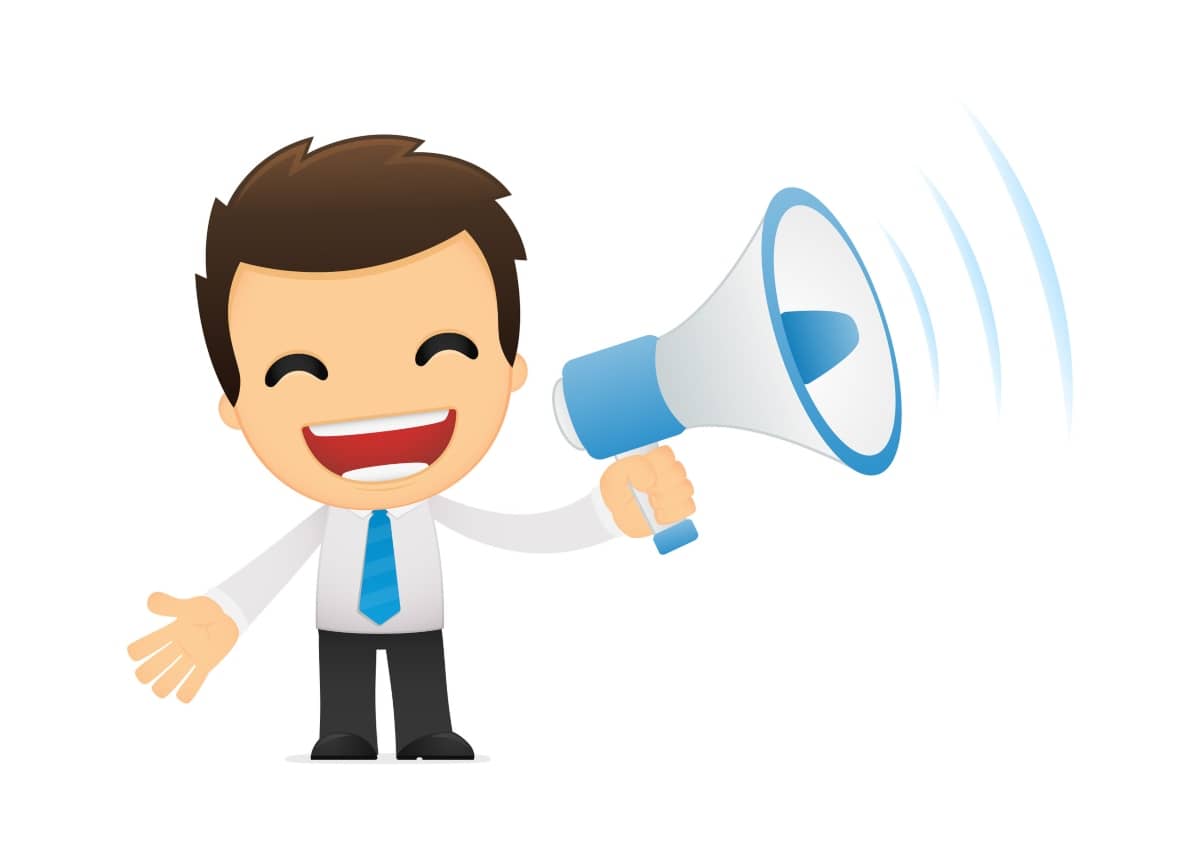
Your teams will become your organization's voice and will be proud to share their positive experiences on social media.
And through sharing, your company may earn goodwill from their followers, boosting your image.
4. Improves teamwork
Encourage teamwork by tracking and rewarding collaboration.
For example, use game-like learning challenges where employees team up to solve problems.
When you quantify the time and effort employees put into helping each other, they'll easily achieve all their targets.
Examples of Employee Gamification
Looking for some epic employee gamification ideas?
We’ve listed eight ways to incorporate game mechanics into your workplace:
1. Infuse employee training with game-based learning
Gamification of employee training and development tasks can include:
- interactive quizzes
- trivia
- fun characters
- scavenger hunts
- missions to complete, and more
It’s an uber-effective way to help employees quantify their learning and spot skill gaps.
Plus, game-based learning is infinitely easier to absorb than a dreary paper-based manual.
2. Create points systems for meeting milestones
Does your company offer incentives to meet training milestones, compliance targets, or KPIs?
If not, a gamified point system can make a mammoth difference to your teams meeting their objectives.
When you incentivize milestones, you'll spur the top-performers who need to be the best!
3. Gamify certifications

When your employees complete an online course, they receive a certificate.
It’s tangible proof of their blood, sweat, and tears.
Gamified features like certifications will increase their intrinsic motivation by promoting professional development in a hella fun way.
4. Use gamification for mundane tasks
Employees involved in collecting, mining, and organizing data know precisely how tedious these tasks can be.
So, add gamification techniques to relieve the boredom and boost employee engagement.
For example, you can assign points for task completion based on the complexity of the task — the more complex the task, the more points they earn.
Or use it for routine tasks such as submitting monthly expense reports, knowledge sharing, or even switching off the lights at the end of the day.
5. Incorporate gamification from the jump
You want to engage and encourage new hires while showing how awesome your company is to work at.
Unfortunately, the onboarding or recruitment tasks that HR dishes out can be incredibly dull.
So, how is gamification used in HR to boost engagement?
Employee training software can help new employees retain knowledge in a fun way. Also, employees can team up to answer questions on compliance, policies, procedures, and company ethics.
If your new hires are enjoying themselves, it will encourage them to do their absolute best, which means you’ll have better employees from the get-go.
Other gamification onboarding examples include virtual office tours, which are helpful for remote workers.
6. Gamify employee recognition
Recognizing employee achievements means they may be more likely to learn and repeat good behaviors.

For example:
- Award badges to your best sales reps
- Use a leaderboard to motivate low performers
- Reward knowledge of vital job functions
On-the-spot recognition certificates are a powerful way to instill a little excitement around the place.
7. Leverage the power of social media
As we know, social media plays a significant role in pretty much everyone’s lives — at home and work.
Social media-style recognition tools enable companies to recognize employee achievements. And for colleagues to praise one another.
For example, you could tag top performers in a Facebook or Instagram post or get the VP to write a shoutout on Linkedin.
Acknowledging successes on social platforms makes employees feel warm and fuzzy.
But it also shows outsiders how well your organization treats its high performers.
8. Up the ante with high stakes rewards
We all love a good pat on the back for a job well done.
We’d also love a follow-up gift card or meal voucher to say “thank you” for our outstanding performance.
But what if you offered your employees limited rewards like incentive travel or cash?
Do this and watch them work their butts to qualify for these sweet high-stakes rewards.
How to Design Employee Gamification
Let’s unpack the steps to design and implement your employee gamification strategy.
1. Be concise about the goals and rules

Never underestimate the importance of a sense of purpose.
So, make sure you’re concise about the objective and the criteria for winning the game.
Make sure your team understands:
- The goal
- The participants
- How will they know when they’ve won
- The rewards for the winners, runner-up awards, etc.
- How achieving this goal will help the business and the employee
- The rules, especially ones that may lead to a disqualification
Make sure everyone is on the same page from the outset. Nobody wants to participate in an unfair race.
2. Gamify training materials
Gamified corporate training materials help unlock all the sweet benefits of gamification.
The most popular gamified learning features are:
- Points — complete a task, earn a point.
- Leaderboards — win the highest number of points and rank the highest.
- Badges — accomplish tasks, achieve results, or demonstrate exemplary behavior and get a virtual badge.
- Rewards — give real-world rewards like vouchers and discounts.
3. Make sure your rewards aren’t lame
We all want others to recognize how good we are.
We know it. So should they.
But, gone are the days of the cringe-worthy “employee of the month” plaque hanging outside the lunchroom.
So, introduce non-lame game design rewards to perk demoralized employees right up.
Nothing drives motivation more than the promise of a kick-ass prize, money, free lunch, or shopping vouchers.
4. Be inclusive in employee recognition
Gamification in business is all about the team.
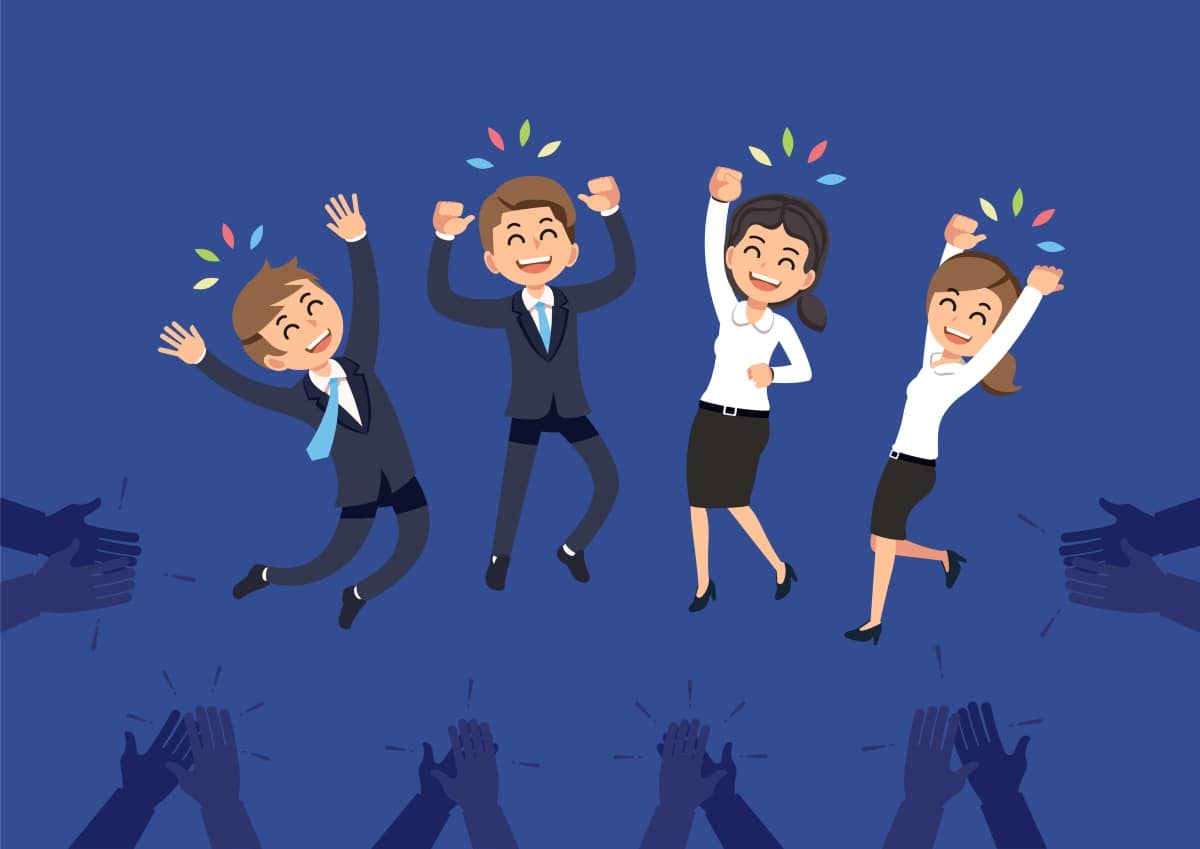
Recognizing and celebrating everyone’s participation is as important as recognizing one person’s achievements.
When employees feel seen for helping the organization achieve its goals, they get a rush knowing they made a difference.
5. Track gamification success
Measuring the success of your gamification strategy is crucial.
For example, a gamification analytics dashboard can track:
- The number of participants,
- Completion rates, and
- Improved job performance during and after the gamification program.
If you’re experiencing low participation rates, reconsider your incentive and recognition programs.
And if overall job performance doesn’t meet your expectations, tweak your gamification initiatives until you hit the sweet spot.
6. Acknowledge failures
Acknowledging failures allow individuals to reflect on their strengths and weaknesses.
For example, let’s say an employee didn’t meet their sales targets at the end of the month. What could they have done differently to achieve the goal?
Make sure you highlight the top successes and failures of the game or challenge — but not the failures of the individual.
Instead, recognize the achievements of each employee so that others can learn from them.
7. Invest in a Gamified Training Platform
And finally, the easiest way bar none to get started with all this is to invest in a fully gamified online training platform.
And the obvious choice is Xperiencify — a platform built from the ground up using all of today's gamification and engagement best practices.
Check it out right here and claim your unlimited time free trial today.
(Pro Tip: With everybody on their mobile devices, consider creating a gamified mobile app to deliver your training materials!)
Get Ahead of the Game
Think you can breathe new life into demoralized and demotivated employees by sending an email or holding a meeting?
Most definitely not.

Instead, add a game mechanic to your teams’ work tasks to encourage desired behaviors, help your employees expand their skillset, and empower innovation through problem-solving.
Through employee gamification, you’ll create incredible opportunities for growth, which will positively impact your organizational culture.
Then, stand back and watch as your rockstar employees get sh*t done.
Kirsty Wilson is a Smart Blogger-certified content marketer and self-taught margarita aficionado. With a passion for Digital Marketing and a knack for crafting captivating Landing Page Copy, she sprinkles her Aussie charm and cheeky humour across lifestyle, travel, and marketing blogs. Currently adventuring through Mexico, she documents her solo travels to inspire fellow Gen-X gals to #SeizeTheDay!